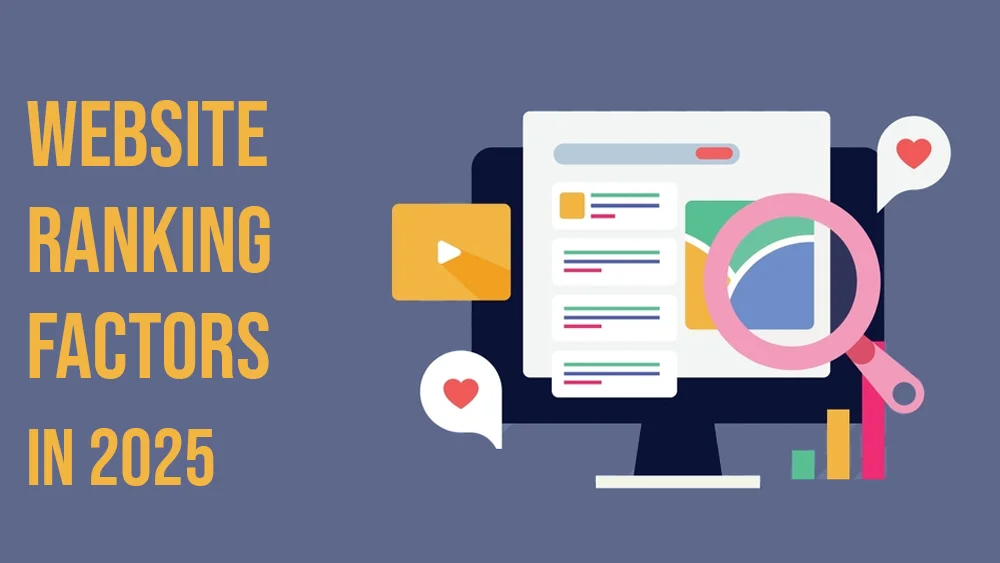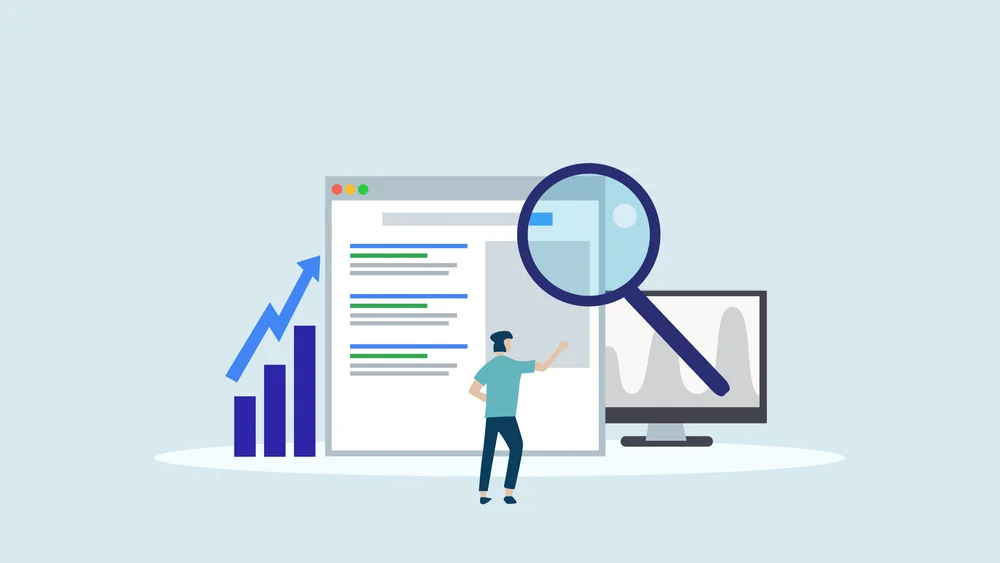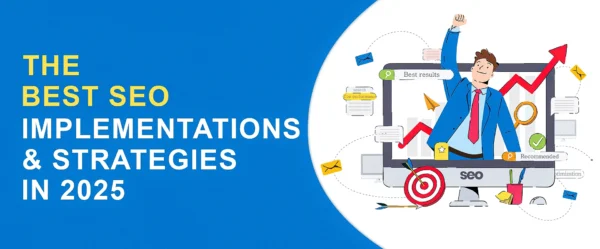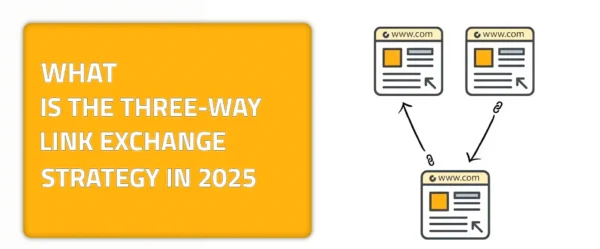The dynamic world of SEO is one that is constantly shifting. With new trends, technologies, and algorithm updates, it is reshaping the SEO field greatly. In 2025, the SEO realm is becoming more competitive than ever. That is why staying relevant requires adapting to these changes. At the heart of it all is link building. This is a strategy that remains critical but has evolved dramatically over the past few years. Once, it was all about sheer numbers; today, it’s about building meaningful connections and earning quality links from authoritative sources. Search engines now prioritize user experience, context, and relevance more than ever, and this has changed how backlinks are evaluated. That is why this guide is all about website ranking factors and how updated they are getting.
If you’re still following outdated link-building practices, you risk falling behind. So, what works in 2025? How do you adapt to these changes? My guide for today dives deep into the critical ranking factors for websites in 2025 and outlines link-building strategies that align with the new rules of SEO. Let’s unravel the secrets to staying ahead in this ever-evolving digital game.
Why Link Building Still Matters in 2025?
Link building continues to hold its place as a cornerstone of SEO, but why is it still so important in 2025? Backlinks are like those people who always have your back with empowerment and endorsing what you say. How so? This is interpreted as they signal to search engines that your content is trustworthy and valuable. These digital “votes of confidence” are crucial in an age where misinformation can spread rapidly. Search engines like Google use backlinks to map the web and gauge the interconnectedness of sites. This is a process that helps them understand authority and context. These two are considered by us SEO specialists as key factors in determining rankings.
However, in 2025, the current focus is on gaining links rather than simply obtaining them. For example, links from authoritative, niche-specific sites carry far more weight than a dozen links from irrelevant or spammy sources. That is because they offer content value. Which means that search engines will see these backlinks as something that empowers your website and not just another link-stuffing process that you hope to rank through. A well-earned backlink from a respected health publication to a fitness blog is a perfect example of what I aim to say in action.
Website Ranking Factors: Quality Over Quantity, the New Standard for Backlinks
In 2025, the key to successful link building is to prioritize quality over quantity. Gone are the days when having a massive number of backlinks, regardless of their source, could push a website up the rankings. Today, search engines have grown smarter and more discerning. They now evaluate backlinks based on factors like the linking site’s domain authority, relevance to your niche, and the nature of the content surrounding the link.
A single link from an authoritative tech website can outperform dozens of links from unrelated blogs or directories. For example, a backlink from a respected industry publication signals expertise and relevance, while a poorly placed link on a spammy forum might do more harm than good. To build a robust backlink profile, focus on relationships with credible websites and platforms. When you prioritize quality, you not only improve your rankings but also foster trust with users and search engines alike. This is something that’s invaluable in today’s digital age and one that you need.
The Role of Content in Link Building
Content is the main base and foundation of any successful link-building strategy. Without engaging and pertinent content, obtaining backlinks becomes a challenging task. But what kind of content attracts links in 2025? It’s content that provides value—whether through solving problems, answering questions, or offering unique insights. Examples include comprehensive guides, original research, engaging infographics, or interactive tools. Consider this: a blog post titled “Sustainable Fashion Trends for 2025,” backed by data and expert opinions, could earn links from fashion bloggers, environmental sites, and even mainstream news outlets.
Great content doesn’t just appeal to search engines; it speaks directly to audiences, making them more likely to share and link to it. Consistency and relevance are the key factors that you can use while creating a strategy for your content. Regularly publishing high-quality, up-to-date content ensures your site remains a go-to resource in your industry. In the realm of SEO, content plays a crucial role in establishing valuable, enduring backlinks.
Website Ranking Factors: The Rise of AI in Link Building Strategies
Artificial intelligence is reshaping SEO, and link building is no exception. By 2025, AI-driven tools will revolutionize SEO by providing unparalleled efficiency and precision in identifying link-building opportunities. These tools can analyze vast datasets to identify high-authority websites, predict the likelihood of a successful link, and even draft personalized outreach emails.
For instance, platforms like Ahrefs and BuzzSumo now integrate AI to pinpoint niche influencers and suggest the best approach to engage with them. AI doesn’t just save time; it enhances strategy. It can identify harmful backlinks faster, ensuring your profile remains clean and authoritative. However, while AI handles the technical side, human creativity and authenticity remain vital.
A link request’s acceptance or rejection depends on how you personalize your outreach and build genuine connections with industry players. Think of AI as your assistant, not your replacement. By combining AI’s data-driven insights with your strategic thinking, you can elevate your link-building game to new heights.
How Social Signals Influence Link Building Success
Social media and link building have become more intertwined than ever in 2025. Social signals that are likes, shares, and comments are indirect but influential factors that can enhance your link-building efforts. When your content gains traction on platforms like Twitter, LinkedIn, or Instagram, it doesn’t just reach a wider audience; it also gets noticed by bloggers, journalists, and webmasters who may link to it. For example, a well-crafted article on “Top 10 Digital Marketing Trends of 2025” that goes viral on LinkedIn could earn backlinks from marketing blogs or business websites. To leverage social signals effectively, optimize your content for shareability.
Add eye-catching visuals, include share buttons, and craft headlines that spark curiosity. Additionally, engage with your audience by replying to comments and fostering discussions. While social signals aren’t direct ranking factors, their ability to amplify your content’s reach makes them indispensable for any modern link-building strategy.
Website Ranking Factors: Balancing Internal and External Link Building
Effective SEO strategies in 2025 strike a balance between internal and external link building. Internal links guide users through your website, improving navigation and helping search engines understand your site’s structure. They also increase dwell time by directing visitors to related content. For example, if you publish a guide on “Healthy Meal Prep,” linking to your recipe collection enhances user experience.
On the other hand, external backlinks build credibility and expand your reach. However, these links need to be carefully selected. That is, as quality overthrows quantity. Collaborating with authoritative websites in your niche amplifies your content’s impact. Striking this balance is crucial: internal links optimize user flow, while external links build your website’s reputation in the broader digital ecosystem. Together, they form a cohesive strategy that ensures your content is both discoverable and credible. And this concludes how you can create a robust framework that supports long-term SEO success easily and without hassles.
Tracking and Measuring Link Building Effectiveness
Measurement leads to improvement, and link building is no different. In 2025, tracking and measuring the effectiveness of your efforts is non-negotiable. Tools like Google Analytics, Ahrefs, and Moz can help you analyze key metrics such as referral traffic, domain authority, and anchor text relevance. Are your backlinks driving traffic, or are they just sitting there unnoticed? Do they come from high-authority sites, or are there spammy links you need to disavow?
Regular audits are essential. Set specific goals, like acquiring five high-quality backlinks a month or improving rankings for a particular keyword. For example, if a guest post earns backlinks but doesn’t increase traffic or rankings, it might signal the need to refine your content or outreach strategy. Measuring success ensures that your efforts align with your goals and helps you adapt to the ever-changing SEO landscape. With consistent monitoring, you can stay proactive, making data-driven decisions to refine your link-building campaigns.
Final Thoughts!
The world of link building in 2025 is more sophisticated, requiring a balance of strategy, creativity, and technology. By focusing on quality over quantity, creating link-worthy content, and leveraging AI and social signals, you can build a backlink profile that not only drives traffic but also establishes authority. Whether you’re a seasoned SEO professional or just starting, the principles in this guide can help future-proof your efforts. Looking for a tool to streamline your link-building journey? linkexchange.ai is your ultimate solution. Connect with credible publishers, gain valuable backlinks, and boost your rankings. This is all available when you click a few clicks. Don’t let outdated strategies hold you back. Embrace the future of SEO with linkexchange.ai, and take your website to the next level today!











